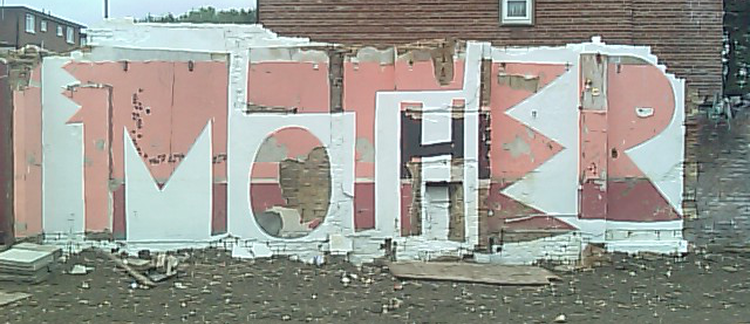VIDEO ARTICLE
Available for download here: https://doi.org/10.16995/sim.262.s1.
Curds and Whey (Jacobs/Hon, 2014) is a two-minute film comprised of one static medium close-up shot, filmed with a camera in the absence of a camera-operator. The shot frames a woman who sits breastfeeding her baby daughter, alongside a door that stands ajar. The two-minute longshot is challenging to watch, taking the experience of visualising breastfeeding to a different level. Although nothing ostensibly happens, it is unclear where the discomfort of the shot comes from. The baby feeds and occasionally touches the mother’s chest and pulls at her hair. The mother looks at her baby who appears large and heavy in her arms. A second woman’s voice is heard from elsewhere, creating a monotonous monologue about motherhood ‘in her day’ and stories from her life, mixed with the sounds of domestic noise, so that the viewer is invited to imagine it may be the mother’s mother who is in the kitchen nearby, perhaps making a cup of tea and some food for her daughter. This sound design is multi layered starting with the audible gurgling of the baby drinking milk overlaid with the disembodied voice from the other room.
As we watch the feeding couple, the sound track becomes more and more intrusive. The content of the monologue comes in and out of focus as the baby’s drinking noises increase, and we begin to hear the loud buzzing of a fly, making the viewer wonder which is more persecutory – the voice or the fly. The question becomes one of transmission. The baby drinks the milk and we wonder what else is transmitted into the mother’s and the child’s mind and body.
Little miss Muffet she sat on her tuffet, eating her curds eating and whey Along came a spider who sat down beside her And frightened miss Muffet away.
Curds and Whey not only resonates with the macabre surreal rhythm of the nursery rhyme, but also describes the separating process within milk itself. The gap in the door to the left of the shot becomes a marker of the threshold of the liminal space between the mother-baby couple. The second voice from the other room in juxtaposition to the image brings to our attention the materiality of film which is itself comprised of an already constituted separation of sound and image, mirroring the separation of curds and whey in milk. Three generations – grandmother, mother, daughter – are in a situation of uncertain transmissions, culminating as the door suddenly opens, a spider runs across the floor, and the film comes to a dramatic climax as all its elements collide: the fly, the baby’s gestures, mother’s expression, the monologue from the other room, the spider, and the door ajar. Curds and whey represent the elements within milk and within film (as material) that throw open the theoretical question of whether or not there is always already a separation in and between the baby/mother/daughter relationships: a separation inherent within the materiality of their phenomenological and embodied psychic life.
Competing Interests
The author has no competing interests to declare.
